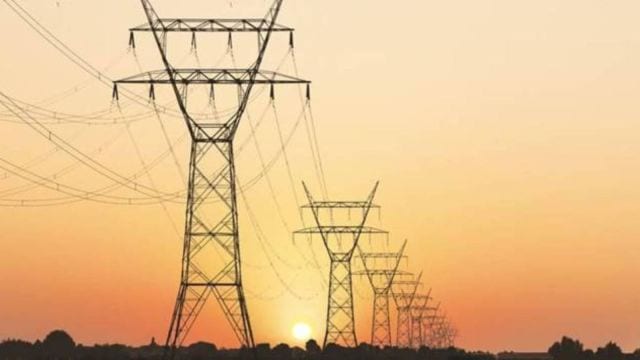No hike in UP power tariff for 6th year in a row as discoms stay in surplus
The Uttar Pradesh Electricity Regulatory Commission issued its tariff order on Friday for the five state distribution companies (DISCOMs) for FY 2025–26
 The regulator said the freeze is possible because UP Power Corporation Ltd (UPPCL) projects an accumulated regulatory surplus of Rs 18,592.38 crore as of 1 April 2025. (File Photo)
The regulator said the freeze is possible because UP Power Corporation Ltd (UPPCL) projects an accumulated regulatory surplus of Rs 18,592.38 crore as of 1 April 2025. (File Photo)For the sixth consecutive year, the Uttar Pradesh Electricity Regulatory Commission (UPERC) has kept retail electricity rates unchanged for all consumer categories while issuing its tariff order on Friday for the five state distribution companies (DISCOMs) for FY 2025–26 under the newly notified UPERC (Multi Year Tariff for Distribution) Regulations, 2025.
The regulator said the freeze is possible because UP Power Corporation Ltd (UPPCL) projects have an accumulated regulatory surplus of Rs 18,592.38 crore as of April 1, 2025, which offsets the need for any tariff increase.
UPERC has also extended the Green Energy Tariff option to all consumers; the additional green energy surcharge has been reduced from Rs 0.36/unit to Rs 0.34/unit for high-voltage (HV) consumers and fixed at Rs 0.17/unit for low-voltage (LV) consumers.
The commission set a distribution-loss trajectory for FY 2025-26 through FY 2029-30, directing UPPCL to cut losses from 13.78% in FY 2024-25 to 10.74% by FY 2029-30.
Licensees have been ordered to display power factor on consumer bills where kVAh billing applies, and UPPCL must issue TDS certificates for tax deducted on interest paid against security deposits. Licensees should collect and update PAN details of consumers where TDS applies, deposit deducted tax and enable consumers to download TDS certificates from their online accounts.
UPERC said it will shortly release a consultation paper to address recurring billing and service issues faced by consumers in multi-storey buildings and townships, problems flagged repeatedly during public hearings.
Also Read: Unlearning Economics: Power supply up, tariffs up too
These include single-point connections, irregular billing and lack of transparency. Time-of-day (TOD) tariff categories and time periods remain unchanged from the previous year, while cross-subsidy surcharges for open-access consumers have been rationalised and reduced for some categories.
The commission finalised the true-up for FY 2023–24, the annual performance review for FY 2024–25 and the annual revenue requirement for FY 2025–26 after evaluating objections and feedback from stakeholders, the public and the State Advisory Committee.
For FY 2023–24, UPERC approved an ARR of Rs 85,082.83 crore for the purchase of 140,580.13 million units (MU), against the DISCOMs’ claim of Rs 90,328.62 crore for 141,931.68 MU. DISCOMs had sought a 15.48% distribution loss; the commission approved 14.69% based on the lower of actual or target figures.
The state subsidy of Rs 17,093.73 crore was taken into account, and revenue from tariff was recorded at Rs 69,235.65 crore (including deemed revenue), leaving a regulatory surplus of Rs 1,246.55 crore for FY 2023–24. For FY 2025–26, the commission approved an ARR of Rs 1,10,993.33 crore for 163,778.24 MU, compared with the DISCOMs’ projection of ₹1,12,865.33 crore for 164,592.49 MU.
Approved distribution losses for FY26 stand at 13.35% against the DISCOMs’ proposal of 13.77%. The state will provide a subsidy of Rs 17,100 crore, and revenue from existing tariffs was estimated at Rs 86,183.29 crore, bringing total revenue available to Rs 1,03,283.29 crore and leaving a regulatory gap of Rs 7,710.04 crore for FY 2025–26.
UPERC noted that only Madhyanchal and Paschimanchal DISCOMs met their FY 2024–25 distribution-loss targets, while PuVVNL and DVVNL were the poorest performers.
The state government will continue to provide subsidies for lifeline consumers (rural and urban), rural scheduled metered consumers and private tubewells at the same levels as the previous year.
The commission urged licensees to proceed with tendering and execution of developmental projects without delay so work can continue through the election period. Public hearings also highlighted concerns from residents of multi-storey complexes; the forthcoming consultation paper will invite stakeholder comments on remedies and regulatory measures.







